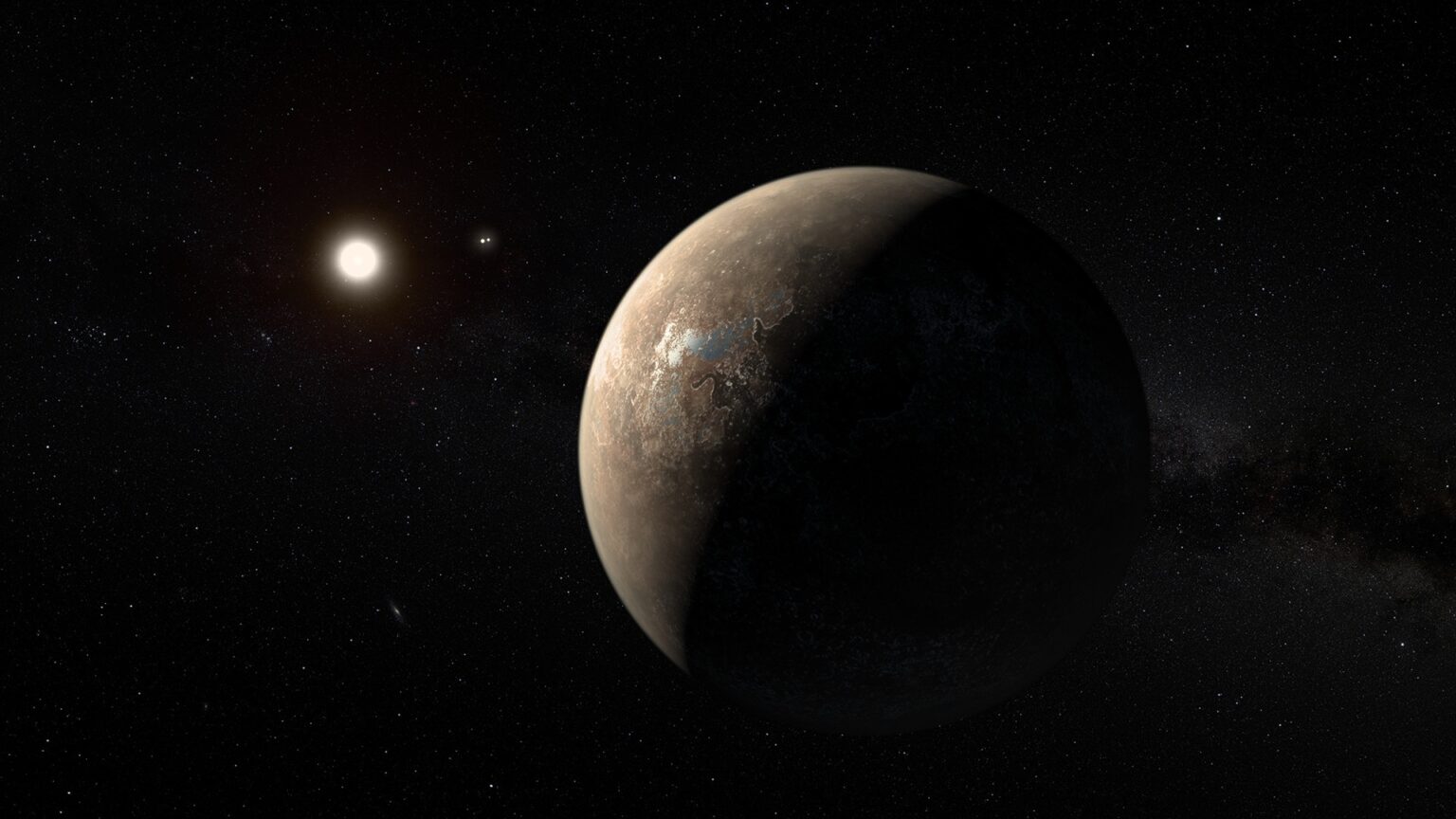Proxima Centauri b is the closest exoplanet to us. But it is not in transit, so we do not see it directly. However, scientists are confident that the new Extremely Large Telescope will be able to find out something interesting about it.

Proxima Centauri b
The Extremely Large Telescope, or ELT, is a new, incredibly powerful telescope that is currently being built in Chile. It should be put into operation in 2025. And scientists have already found a lot of tasks for it. In particular, it is expected that the telescope will be able to study Proxima Centauri b.
Proxima Centauri b is the closest exoplanet to Earth. It is an Earth-mass planet located in the habitable zone of a red dwarf, just 4 light-years from Earth. It receives about 65% of the energy that the Earth receives from the Sun, and, depending on its evolutionary history, may have oceans of water and an atmosphere rich in oxygen.
Our nearest neighbor may be a haven for life, or it may be a dry rock, but in any case, it is an excellent target for the search for extraterrestrial life. However, there are certain difficulties with this. The fact is that our usual methods of detecting biomarkers will not work on Proxima Centauri B.
The problem is that Proxima Centauri B is not a transit planet. It was discovered by another method known as Doppler spectroscopy. When we look at the light from the star closest to us, we see that its spectrum changes somewhat over time — the radiation shifts to the “red” and “blue” regions. The gravitational pull of Proxima Centauri B causes the star to fluctuate slightly. So, we know that an exoplanet is there, and we have a good idea of its size and mass, but since it does not pass by its star, we cannot observe the absorption spectrum of its atmosphere.
A new way to detect the spectrum of exoplanets
A new study claims that there is another way to find life, using the reflection of starlight from the planet’s atmosphere. Basically, the idea is simple. Instead of looking for light that passes directly through the atmosphere, look for light that reflects off it. We’ve done this for planets like Mars and outer planets that don’t pass through the Sun, so we can do it for exoplanets as well.
The problem is that the reflected starlight from the planet is tiny compared to the radiance of the star. Therefore, astronomers used masks to block out the central brilliance of the star and see its planets. Astronomers did this to directly observe large gas planets orbiting stars, but not Earth-sized worlds.
In their scientific work, the authors consider the potential of the Extremely Large Telescope (ELT), which is currently being built in northern Chile. In particular, they are considering the High Angular Resolution Monolithic Optical and Near-infrared Integral field spectrograph (HARMONI), which will be able to capture high-resolution spectra on a telescope. The team simulated observations of Proxima Centauri using the masking effect to capture the light of the exoplanet.
According to phys.org
Follow us on Twitter to get the most interesting space news in time
https://twitter.com/ust_magazine


